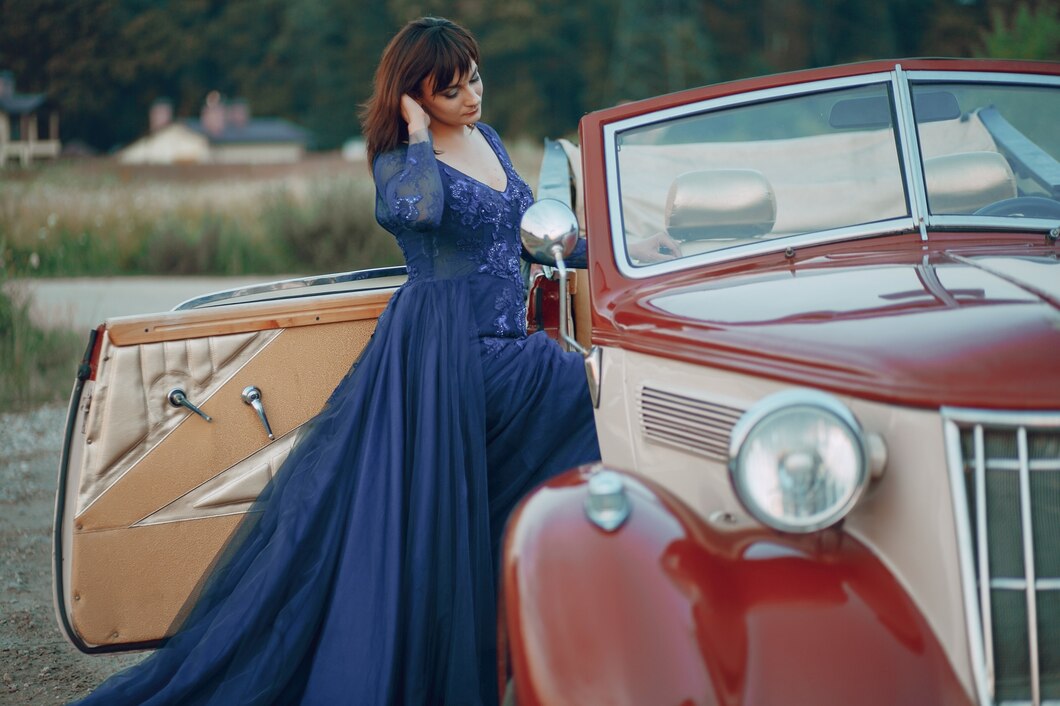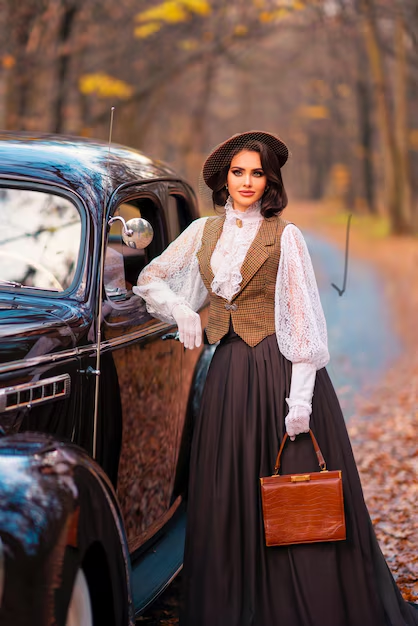Introduction
Luxury classic cars are more than just vehicles; they are symbols of prestige, craftsmanship, and an era of automotive excellence that still captivates enthusiasts today. The allure of vintage luxury automobiles lies in their timeless design, superior engineering, and the exclusivity they represent. For collectors and car lovers, owning a classic luxury car is like owning a piece of history, a tribute to an age when automobiles were not just about transportation but about status, elegance, and mechanical artistry. In this exploration of luxury classics, we delve into the world of vintage opulence, uncovering the legacy, the craftsmanship, and the enduring appeal of these automotive treasures.

The Golden Age of Luxury Automobiles
The golden age of luxury automobiles is frequently referred to as the early to mid-20th century. This period saw the rise of some of the most iconic car manufacturers, each striving to outdo the other in terms of sophistication, performance, and grandeur. Brands such as Rolls-Royce, Bentley, Cadillac, and Mercedes-Benz defined the industry with their innovative designs and unparalleled quality. These automobiles were meticulously handcrafted, incorporating the finest materials like leather upholstery, rare wood finishes, and intricate chrome details.
Rolls-Royce, for instance, set the standard for opulence with its Phantom series. The Rolls-Royce Phantom II, which was made in the 1930s, was a symbol of luxury. It had a huge front grille, a engine that ran at a whisper, and a ride that was so smooth that passengers felt like they were floating in the air. Meanwhile, Bentley, a brand synonymous with performance and luxury, introduced models such as the Bentley 8 Litre, a grand touring car that combined power with sheer elegance.
The Craftsmanship Behind Vintage Luxury Classics
In contrast to the mass-produced automobiles of today, vintage luxury automobiles were frequently made by skilled craftsmen by hand. Each vehicle was a work of art, carefully assembled to meet the highest standards of craftsmanship. Coachbuilding was a key aspect of these classic cars, with brands such as Pininfarina, Mulliner, and Zagato working in partnership with car manufacturers to create bespoke bodies that exuded exclusivity.
These cars stand out thanks to the use of high-quality materials. Interiors were adorned with hand-stitched leather seats, exotic wood trims, and polished metal accents. Every detail, from the dashboard dials to the door handles, was carefully designed to offer an unmatched level of sophistication. The result was a driving experience that was as much about comfort and luxury as it was about performance.
For instance, the Cadillac Eldorado Brougham, which was released in the 1950s, was a work of art. It featured a stainless-steel roof, power-adjustable seats, and even a built-in minibar. Similarly, the Mercedes-Benz 300SL, with its iconic gullwing doors, was not only a design masterpiece but also a technological marvel, featuring direct fuel injection and a lightweight aluminum body.
The Enduring Legacy of Classic Luxury Cars
The fascination with vintage luxury automobiles has only grown with time. Collectors and enthusiasts seek these vehicles not just for their beauty but also for their historical significance and investment potential. Classic cars have become prized assets, with some models fetching millions at auctions. The rarity of these vehicles adds to their allure, as many were produced in limited numbers, making them highly coveted among collectors.
For example, the Bugatti Type 57SC Atlantic is one of the most valuable vintage cars in existence. With only four ever made, it embodies exclusivity and timeless elegance. Similarly, the Ferrari 250 GTO, a car that defined the pinnacle of 1960s luxury and performance, remains one of the most sought-after classic cars in history. It is a true collector’s dream due to its breathtaking design and racing pedigree. Aside from their monetary value, classic luxury cars serve as rolling pieces of history. They tell the story of a time when car manufacturers prioritized craftsmanship over cost-cutting measures. Celebrities, royalty, and influential people owned a lot of these cars, which made them even more famous as symbols of opulence.
The Revival of Vintage Luxury
The appreciation for vintage luxury cars has led to a resurgence of interest in restoration and preservation. Classic car restoration has become an art form, with skilled craftsmen dedicated to reviving old masterpieces to their former glory. Restorers meticulously refurbish every component, from the engine to the upholstery, ensuring that these cars remain true to their original design while incorporating modern advancements for enhanced performance and reliability.
Events such as the Pebble Beach Concours d’Elegance and the Goodwood Festival of Speed celebrate these automotive treasures, bringing together collectors, enthusiasts, and industry experts to admire and discuss classic luxury cars. These gatherings demonstrate that the appeal of vintage automobiles is universal and that they have a long history. Moreover, modern car manufacturers have also drawn inspiration from vintage luxury models. Rolls-Royce and Bentley, for example, continue to incorporate traditional design elements into their contemporary automobiles, honoring their extensive heritage while embracing cutting-edge technology. The Rolls-Royce Phantom VIII, for example, retains the grandeur of its predecessors while integrating state-of-the-art features such as a digital dashboard and advanced driver-assistance systems.
Why Collectors and Enthusiasts Cherish Luxury Classics
Owning a vintage luxury car is more than just a statement of wealth; it is a passion-driven pursuit that reflects a deep appreciation for history, design, and engineering. Enthusiasts often spend years searching for the perfect classic car, meticulously restoring it, and maintaining it with the utmost care. Owning a piece of automotive history gives you an unparalleled sense of pride. For many collectors, the appeal lies in the emotional connection these cars evoke. Driving a classic luxury car is a sensory experience, from the feel of the handcrafted steering wheel to the purr of a well-tuned engine. Vintage luxury cars offer a raw and immersive driving experience, in contrast to modern automobiles, which frequently place an emphasis on efficiency and digital interfaces. The nostalgia associated with these vehicles transports owners and admirers to a bygone era, where elegance and sophistication were the defining characteristics of automotive design.

Conclusion
Vintage luxury cars represent the pinnacle of automotive artistry, capturing the essence of a time when craftsmanship, exclusivity, and opulence were paramount. Their enduring appeal lies not only in their aesthetic and engineering excellence but also in the stories they tell. These automobiles serve as reminders of an era when driving was not just a necessity but a lavish experience, defined by elegance, prestige, and meticulous attention to detail.
As the world continues to evolve, the admiration for classic luxury automobiles remains steadfast. Collectors, restorers, and enthusiasts keep their legacy alive, classics ensuring that these masterpieces continue to be celebrated for generations to come. Whether showcased at prestigious events, driven on scenic roads, or displayed in private collections, vintage luxury cars will always hold a special place in the hearts of those who appreciate the beauty and brilliance of classic automotive craftsmanship.

